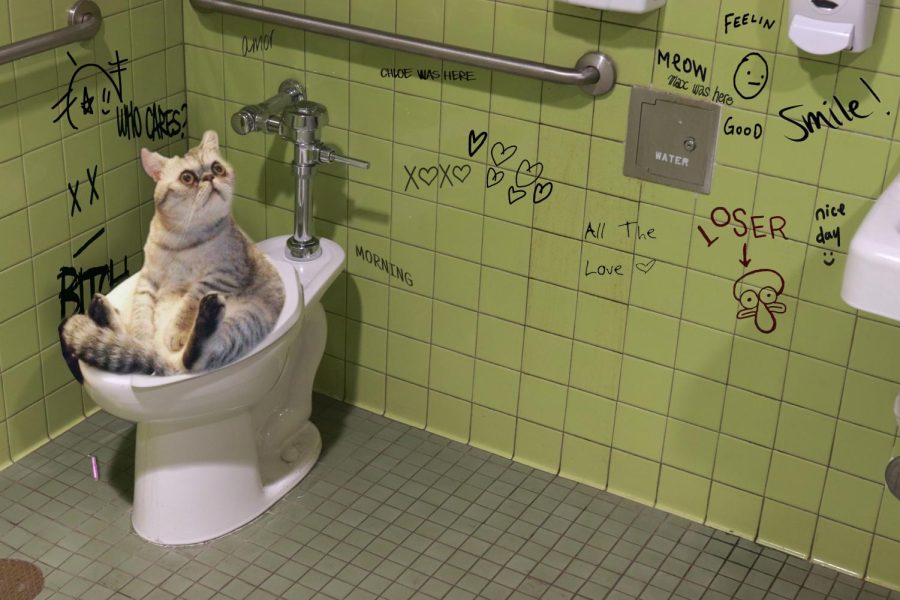Reasons Why You Need to Never Flush Animal Waste Down the Toilet
Reasons Why You Need to Never Flush Animal Waste Down the Toilet
Blog Article
Just about everyone seems to have their personal way of thinking on the subject of Should you flush animal waste down the toilet.

When it concerns taking care of waste, especially animal waste, many people typically turn to the practical choice of flushing it down the bathroom. Nevertheless, this relatively simple option can have severe repercussions for the atmosphere and public health. In this short article, we'll explore why flushing animal waste down the toilet is a bad concept and give different approaches for correct disposal.
Intro
Appropriate waste disposal is essential for maintaining environmental sustainability and public health. While it might appear safe to flush animal waste down the toilet, it can lead to numerous problems, both for the atmosphere and human well-being.
Threats of flushing pet waste
Environmental impact
Purging pet waste introduces hazardous bacteria and virus into waterways, which can adversely affect aquatic environments. These pathogens can contaminate water sources and harm marine life, interrupting delicate ecological communities.
Public health problems
Pet waste contains harmful bacteria such as E. coli and Salmonella, which can pose severe health risks to human beings. Flushing pet waste down the commode can pollute water supplies, resulting in the spread of conditions and infections.
Alternatives to flushing
Rather than flushing animal waste down the toilet, there are several alternate disposal methods that are more eco-friendly and sanitary.
Composting
Composting animal waste is an eco-friendly means to get rid of it. By composting, raw material is broken down into nutrient-rich dirt, which can be made use of to fertilize gardens and plants.
Garbage dump disposal
Dealing with animal waste in a land fill is another choice. While not as eco-friendly as composting, it is a safer alternative to flushing, as it stops the contamination of water resources.
Family pet garbage disposal systems
There are specialized animal waste disposal systems readily available that securely and hygienically dispose of animal waste. These systems commonly make use of enzymes to break down waste and remove odors.
Steps to appropriate pet garbage disposal
To make certain proper disposal of animal waste, follow these steps:
Scooping and nabbing waste
Consistently scoop and bag animal waste utilizing naturally degradable bags. This stops waste from infecting the setting.
Making use of marked waste containers
Dispose of bagged pet waste in assigned waste bins, such as garden compost containers or garbage dump bins. Prevent flushing it down the bathroom whatsoever costs.
Cleaning can and pet dog locations routinely
Routinely clean can and pet dog locations to avoid the buildup of waste and bacteria. Usage pet-safe cleansing products to preserve hygiene.
Advantages of correct disposal techniques
Adopting correct disposal approaches for animal waste provides numerous advantages:
Lowered environmental pollution
Appropriate disposal methods reduce the threat of environmental pollution, securing waterways and ecosystems from contamination
Decreased danger of water contamination.
By avoiding flushing pet waste down the commode, the danger of water contamination is significantly lowered, protecting public health.
Improved cleanliness and hygiene
Correct disposal methods advertise better cleanliness and health, producing a more secure atmosphere for both human beings and animals.
Verdict
To conclude, purging animal waste down the commode is hazardous to the environment and public health. By embracing alternative disposal methods and following proper waste administration methods, we can decrease the adverse influence of pet waste and add to a cleaner, healthier earth.
What To Do With Dog Poo – The Do's And Don'ts Of Disposing Of Faeces
Dog poo bins
Some councils provide dedicated dog waste bins in popular dog-walking areas that can take dog poo that has been bagged but you can legally dispose of dog waste in any public litter bin, as long as it is securely bagged. This also applies to your wheelie bin at home.
Do not flush
Water companies do not recommend flushing dog faeces down the toilet because certain parasites can survive the water processing treatment and are potentially harmful to humans. You should also never consider flushing dog poo that has been bagged down the toilet as the bags will not break down and instead create severe blockages in the sewage system.
In the woods
The Forestry Commission promotes a ‘stick and flick’ method for dealing with waste in the woods. This means finding a stick and using it to flick any poo from off the path so that it is out of the way of other walkers. You could also bury it as long as it is not in an area where there might be livestock.
Livestock
Parasites found in dog poo can be transmitted to livestock if they inadvertently eat infected faeces that has been left on grazing land. This could result in the death of sheep or abortion in cattle so you should always make sure you pick up your dog’s waste in fields where livestock could be present.

I was shown that report about Don't Flush Your Pets Poo Down The Loo, Vet Warns from a good friend on another blog. So long as you liked our blog posting if you please make sure you remember to pass it around. Many thanks for taking the time to read it.
Request Service Report this page